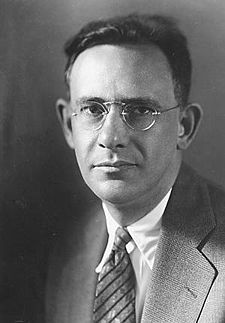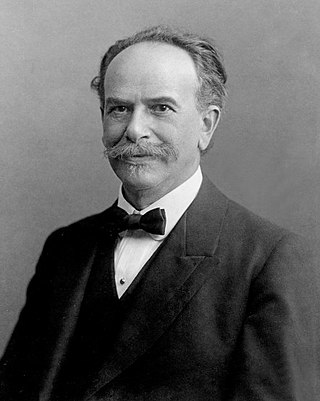Related Research Articles

Anthropology is the scientific study of humanity, concerned with human behavior, human biology, cultures, societies, and linguistics, in both the present and past, including past human species. Social anthropology studies patterns of behavior, while cultural anthropology studies cultural meaning, including norms and values. A portmanteau term sociocultural anthropology is commonly used today. Linguistic anthropology studies how language influences social life. Biological or physical anthropology studies the biological development of humans.

Cultural anthropology is a branch of anthropology focused on the study of cultural variation among humans. It is in contrast to social anthropology, which perceives cultural variation as a subset of a posited anthropological constant. The term sociocultural anthropology includes both cultural and social anthropology traditions.

Edward Sapir was an American anthropologist-linguist, who is widely considered to be one of the most important figures in the development of the discipline of linguistics in the United States.

Franz Uri Boas was a German-American anthropologist and a pioneer of modern anthropology who has been called the "Father of American Anthropology". His work is associated with the movements known as historical particularism and cultural relativism.

Social science is one of the branches of science, devoted to the study of societies and the relationships among individuals within those societies. The term was formerly used to refer to the field of sociology, the original "science of society", established in the 18 th century. In addition to sociology, it now encompasses a wide array of academic disciplines, including anthropology, archaeology, economics, human geography, linguistics, management science, communication science, and political science.
Anthropological linguistics is the subfield of linguistics and anthropology which deals with the place of language in its wider social and cultural context, and its role in making and maintaining cultural practices and societal structures. While many linguists believe that a true field of anthropological linguistics is nonexistent, preferring the term linguistic anthropology to cover this subfield, many others regard the two as interchangeable.
Applied anthropology is the practical application of anthropological theories, methods, and practices to the analysis and solution of practical problems. The term was first put forward by Daniel G. Brinton in his paper titled, "The Aims of Anthropology" and John Van Willengen simply defined applied anthropology as "anthropology put to use" Applied anthropology includes conducting research with a primary or tertiary purpose to solve real-world problems in areas such as public health, education, government, business, and more.
Sociocultural anthropology is a term used to refer to social anthropology and cultural anthropology together. It is one of the four main branches of anthropology. Sociocultural anthropologists focus on the study of society and culture, while often interested in cultural diversity and universalism.

Material culture is the aspect of culture manifested by the physical objects and architecture of a society. The term is primarily used in archaeology and anthropology, but is also of interest to sociology, geography and history. The field considers artifacts in relation to their specific cultural and historic contexts, communities and belief systems. It includes the usage, consumption, creation and trade of objects as well as the behaviors, norms and rituals that the objects create or take part in.

Boasian anthropology was a school within American anthropology founded by Franz Boas in the late 19th century.
History of anthropology in this article refers primarily to the 18th- and 19th-century precursors of modern anthropology. The term anthropology itself, innovated as a Neo-Latin scientific word during the Renaissance, has always meant "the study of man". The topics to be included and the terminology have varied historically. At present they are more elaborate than they were during the development of anthropology. For a presentation of modern social and cultural anthropology as they have developed in Britain, France, and North America since approximately 1900, see the relevant sections under Anthropology.
Ethnoecology is the scientific study of how different groups of people living in different locations understand the ecosystems around them, and their relationships with surrounding environments.
Feminist anthropology is a four-field approach to anthropology that seeks to transform research findings, anthropological hiring practices, and the scholarly production of knowledge, using insights from feminist theory. Simultaneously, feminist anthropology challenges essentialist feminist theories developed in Europe and America. While feminists practiced cultural anthropology since its inception, it was not until the 1970s that feminist anthropology was formally recognized as a subdiscipline of anthropology. Since then, it has developed its own subsection of the American Anthropological Association – the Association for Feminist Anthropology – and its own publication, Feminist Anthropology. Their former journal Voices is now defunct.
American Anthropologist is the flagship journal of the American Anthropological Association (AAA), published quarterly by Wiley. The "New Series" began in 1899 under an editorial board that included Franz Boas, Daniel G. Brinton, and John Wesley Powell. The current editor-in-chief is Elizabeth Chin.
Cognitive anthropology is an approach within cultural anthropology and biological anthropology in which scholars seek to explain patterns of shared knowledge, cultural innovation, and transmission over time and space using the methods and theories of the cognitive sciences often through close collaboration with historians, ethnographers, archaeologists, linguists, musicologists, and other specialists engaged in the description and interpretation of cultural forms. Cognitive anthropology is concerned with what people from different groups know and how that implicit knowledge, in the sense of what they think subconsciously, changes the way people perceive and relate to the world around them.
The following outline is provided as an overview of and topical guide to anthropology:
Interactional sociolinguistics is a subdiscipline of linguistics that uses discourse analysis to study how language users create meaning via social interaction. It is one of the ways in which linguists look at the intersections of human language and human society; other subfields that take this perspective are language planning, minority language studies, quantitative sociolinguistics, and sociohistorical linguistics, among others. Interactional sociolinguistics is a theoretical and methodological framework within the discipline of linguistic anthropology, which combines the methodology of linguistics with the cultural consideration of anthropology in order to understand how the use of language informs social and cultural interaction. Interactional sociolinguistics was founded by linguistic anthropologist John J. Gumperz. Topics that might benefit from an Interactional sociolinguistic analysis include: cross-cultural miscommunication, politeness, and framing.
The following outline is provided as an overview of and topical guide to social science:
Social anthropology is the study of patterns of behaviour in human societies and cultures. It is the dominant constituent of anthropology throughout the United Kingdom and much of Europe, where it is distinguished from cultural anthropology. In the United States, social anthropology is commonly subsumed within cultural anthropology or sociocultural anthropology.
Anthropology is the study of human societal and cultural development in the past, present, and future with a number of facets that are categorized into five different fields. These fields include: biological (physical) anthropology, cultural (socio-cultural) anthropology, linguistic anthropology (linguistics), archaeology, and applied anthropology. Applied anthropology is the analysis of human interaction with the purpose of solving practical problems that affect and arise throughout time between cultures and societies. Applied anthropologists use many different methods to conduct research on agriculture, health and medicine, housing, social services, political-economic development, displacement and resettlement, business and industry, education, nutrition, environment, and aging. Applied anthropology research methods are: policy research, evaluation research, cultural intervention, activist (action) research, participatory action research (PAR).
References
- ↑ Anderson, E. N. (2003), "Four-Field Anthropology". Anthropology News, 44: 3.
- ↑ Alice Beck Kehoe. 1998. Humans: An Introduction to Four-Field Anthropology. Psychology Press, 1998 - Social Science
- ↑ Hicks, Dan (December 2013). "Four Field Anthropology: Charter Myths and Time Warps from St. Louis to Oxford". Current Anthropology. 54 (6): 753–763. doi: 10.1086/673385 . JSTOR 10.1086/673385.
- ↑ Pattison, Mary Burneice. "An Analysis of the Four-Field Approach in Anthropology and its Longevity." Order No. 1507077 Prescott College, 2011. Ann Arbor: ProQuest. Web. 20 Nov. 2020.
- ↑ Borofsky, R. (2002), "The Four Subfields: Anthropologists as Mythmakers". American Anthropologist, 104: 463–480.
- 1 2 Kelso, Jack. “Teaching Anthropology and The Four‐Field Approach.” Anthropology News (Arlington, Va.), vol. 44, no. 8, 2003, pp. 24–25.